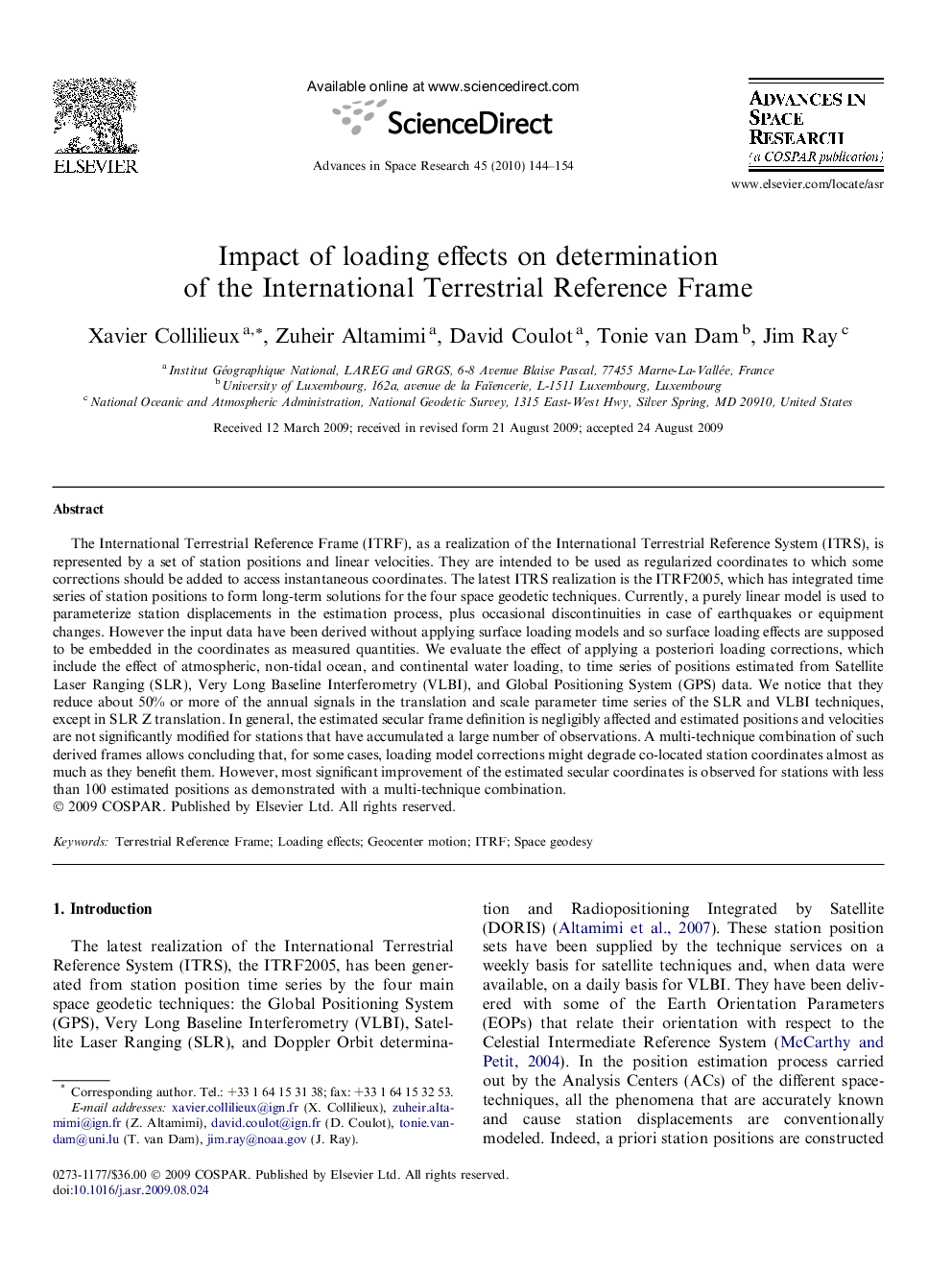| کد مقاله | کد نشریه | سال انتشار | مقاله انگلیسی | نسخه تمام متن |
|---|---|---|---|---|
| 1767791 | 1020202 | 2010 | 11 صفحه PDF | دانلود رایگان |

The International Terrestrial Reference Frame (ITRF), as a realization of the International Terrestrial Reference System (ITRS), is represented by a set of station positions and linear velocities. They are intended to be used as regularized coordinates to which some corrections should be added to access instantaneous coordinates. The latest ITRS realization is the ITRF2005, which has integrated time series of station positions to form long-term solutions for the four space geodetic techniques. Currently, a purely linear model is used to parameterize station displacements in the estimation process, plus occasional discontinuities in case of earthquakes or equipment changes. However the input data have been derived without applying surface loading models and so surface loading effects are supposed to be embedded in the coordinates as measured quantities. We evaluate the effect of applying a posteriori loading corrections, which include the effect of atmospheric, non-tidal ocean, and continental water loading, to time series of positions estimated from Satellite Laser Ranging (SLR), Very Long Baseline Interferometry (VLBI), and Global Positioning System (GPS) data. We notice that they reduce about 50% or more of the annual signals in the translation and scale parameter time series of the SLR and VLBI techniques, except in SLR Z translation. In general, the estimated secular frame definition is negligibly affected and estimated positions and velocities are not significantly modified for stations that have accumulated a large number of observations. A multi-technique combination of such derived frames allows concluding that, for some cases, loading model corrections might degrade co-located station coordinates almost as much as they benefit them. However, most significant improvement of the estimated secular coordinates is observed for stations with less than 100 estimated positions as demonstrated with a multi-technique combination.
Journal: Advances in Space Research - Volume 45, Issue 1, 4 January 2010, Pages 144–154